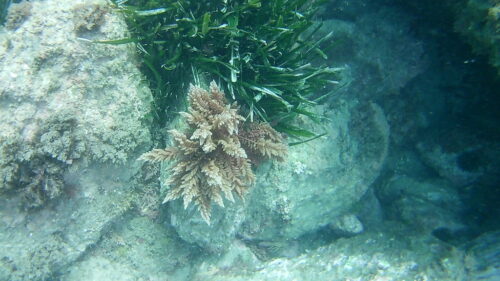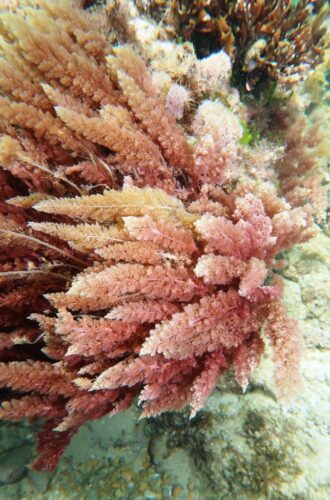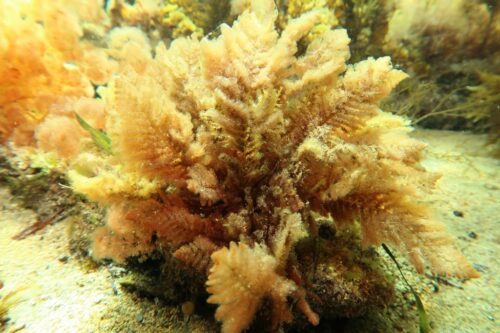A South Australian company called CH4 SA, as part of CH4 Global, will be farming red algae to help to improve bovine meat and dairy production, whilst eliminating the dreaded methane production associated with cows.
According to a report in a “Future Adelaide” lift out section of the Sunday Mail on 13th December 2020, the company says that they aim to use disruptive technology to revolutionize the farming industry worldwide.
The report said, “The technology involves developing a red seaweed (Asaparagopsis armata and Asparagopsis taxiformis) aquaculture business to produce feed for ruminant animals (cows, sheep, goats and camels) that has been proven more than 85% effective in reducing methane emissions from these animals.”
The General Manager of CH4 SA, Dr Adam Main said, “The seaweed is a protein which replaces a range of other bioactive and effective compounds farmers feed to their animal, but in the process of interrupting that methane production activity in the stomach, it allows the cow to retain more energy, so a meat cow will make more meat and a dairy cow will produce more milk, so it’s a healthier animal and it has a return on investment for the farmer.”
With the purpose of reducing methane in ruminant animals, CH4 SA will sell the two species of Asparagopsis under a global licence. It is now running land-based aquaculture systems with full life cycles of the two red alga species. It is also planning offshore 1ha trials this summer around Port Lincoln and the Yorke Peninsula.
Asparagopsis armata (Harpoonweed) features on page 83 of “Australian Marine Life – the plants and animals of temperate waters” by Graham J Edgar (first edition). It explains that the ‘armata’ part of the Asparagopsis armata name of the alga refers to the short spines on the lower branches. These short spines are used to attach onto other plants. Asparagopsis armata is said to be an important food source for blacklip abalone.

Asparagopsis armata
(Taken by David Muirhead)
According to iNaturalist, “Asparagopsis armata is a marine red algae species. It was first described in 1855 by Harvey, who found the algae on the Western Australian coast. Native to the Southern hemisphere, it has been introduced to the North-eastern Atlantic Ocean and the Mediterranean Sea. (“Australian Marine Life” by Edgar (first edition) says that Asparagopsis armata is prevalent in Europe now.)
iNaturalist says that the life cycle of has two distinct phases – the gametophyte phase and the tetrasporophyte phase. The gametophyte phase occurs in Europe between June and September. It is pale purple-red, and it has 1 mm wide and up to 200 mm long irregularly branched thalli. The lower branchlets have characteristic harpoon-like barbs. The tetrasporophyte phase (previously identified as Falkenbergia rufolanosa) occurs in Europe all year round. It is brownish red, branched and filamentous and grows in 15 mm diameter tufts. (Source: Wikipedia)”
iNaturalist says that “Asparagopsis taxiformis, (limu kohu) formerly A. sanfordiana, is a species of red alga, with cosmopolitan distribution in tropical to warm temperate waters. (Source: Wikipedia)”
It also says, “Like many red algae, A. taxiformis has a haplodiplophasic lifecycle, with each phase morphologically distinct. The species’ haploid stage was initially described as Falkenbergia hillebrandii (Bornet) Falkenberg 1901 because it was thought to be a separate species.”
It also describes some culinary uses for A. taxiformis:
“Ahi limu poke – Asparagopsis is one of the most popular types of limu. in the cuisine of Hawaii, it is principally a condiment. It is known as Limu kohu in the Hawaiian language meaning “pleasing seaweed”. Limu kohu is a traditional ingredient in poke. The essential oil of limu kohu is 80% bromoform (tri-bromo-methane) by weight, and includes many other bromine- and iodine-containing organic compounds.”
iNaturalist gives the following taxonomy details for Asparagopsis taxiformis and Asparagopsis armata: –
Plants – Kingdom Plantae
Red Algae – Phylum Rhodophyta
Class Florideophyceae
Order Bonnemaisoniales
Family Bonnemaisoniaceae
Genus Asparagopsis
Species:
Harpoonweed, Asparagopsis armata
Asparagopsis taxiformis
iNaturalist goes on to describe methane emissions reduction in cattle as follows: –
“In 2014, researchers at CSIRO and James Cook University demonstrated that feeding ruminants a diet consisting of 1-2% percent red seaweed reduced their methane emissions by over 90 percent. Of 20 types of seaweed tested, A. taxiformis showed the most promise, with nearly 99 percent effectiveness. The findings spurred interest from leading academic and trade organizations to further investigate its effects on ruminant animal production. Some findings of research on these effects have been that the dichloromethane extract (found in A. taxiformis) was the most potent bioactive, reducing methane production by 79%. Other bioactives found were bromoform, dibromochloromethane, bromochloroacetic acid and dibromoacetic acid.
“Supply from wild harvest is not expected to be adequate to support broad adoption. A. taxiformis has yet to be commercially farmed at scale. A research/development initiative called Greener Grazing is seeking to close the life cycle of A. taxiformis and demonstrate ocean based grow-out. A startup out of KTH Royal Institute of Technology; Volta Greentech and Symbrosia from Yale University, are both working to grow A. taxiformis. Symbrosia is looking to integrate the cultivation with whiteleg shrimp on land, using a patent-pending technology. Sea-based cultivation has been proposed as a path to scale production and “drive the cost down so it can be used by beef and dairy farmers around the world”.”
The above details confirm that ALL life in the sea is of great importance and needs to be cared for. Another example of this concerns cone shells. According to a report in The Advertiser on 27th May 2020, “Human insulin modified to mimic the venom of a deep sea snail could help speed up diabetes treatments and improve outcomes”.
The report goes on to say, “Scientists from the Walter and Eliza Hall Institute in Melbourne have developed a new form of human insulin called “mini-ins”, which successfully mimics the quick acting properties of cone snail venom insulin. The discovery means insulin would react almost instantly after being administered, rapidly lowering blood sugar levels.”
Professor Mike Lawrence is quoted as having said that the new-look insulin could make the lives of diabetic patients much easier. Those patients usually need to wait about 10-20 minutes between injecting insulin and eating food.
But getting back to species of Asparagopsis, according to “Ecology of Australian Temperate Reef: The Unique South” edited by Scoresby Shepherd and Graham Edgar, “The migration of tropical species into southern Australia has very likely been aided in the recent past by the warm (Leeuwin Current) ….. and less recently during the last interglacial warm period …… when tropical corals, and warm-water forams and molluscs expanded their ranges into southern Australia. ….. Some tropical algal species are now relict in the South Australian Gulfs (including) Asparagopsis taxiformis.”

Asparagopsis taxiformis
(Taken by David Muirhead)
Asparagopsis taxiformis has been recorded in SA waters through iNaturalist more than 10 times. David Muirhead has posted 10 sightings himself, and there is just a single other sighting (by Mike Burrell).
Asparagopsis armata has only been recorded in SA waters through iNaturalist just three times, twice by David Muirhead and once by Dan Monceaux.

Asparagopsis armata
(Taken by David Muirhead)


I saw elsewhere that some 835 hectares of lease area has been allocated for the growing of Asparagopsis in Spencer Gulf alone. Thanks for writing this summary, Steve.
[…] Red Alga Use in Agriculture […]